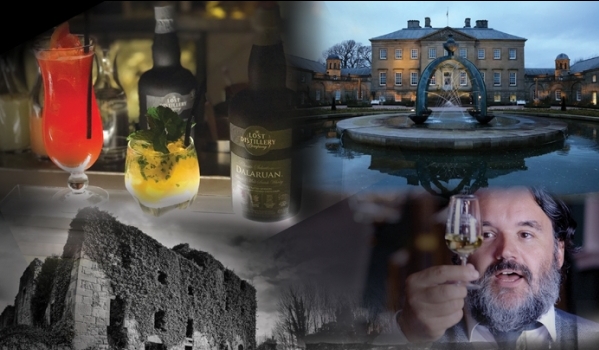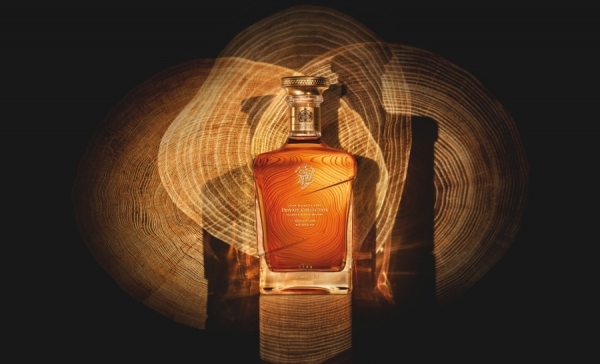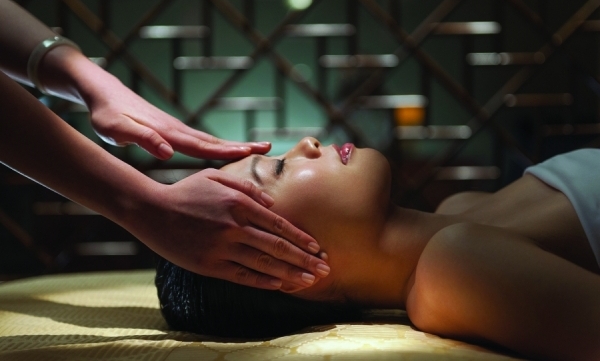
Winston Churchill, who was among other things a discerning drinker, was once given a glass of fortified wine from the late 18th century. He is said to have remarked, “My God, do you realise this Madeira was made when Marie Antoinette was still alive?”
Part of the allure of very old fine wines and spirits is that they provide a direct sensory link to history. Wines and spirits dating back to the days of Churchill are rare enough, let alone bottles from the 18th century.
Madeira is remarkable in that it is often still drinkable after more than a century. That is partly because a degree of oxidisation – regarded as a serious fault in most other wines – is an essential part of its character. As recently as 2015, Christie’s auctioned a bottle of Madeira thought to be the oldest still in existence, made before Marie Antoinette was born in 1715. It fetched nearly US$20,000 (HK$155,800).
Most other wines, however carefully stored, would be undrinkable by that age, but spirits can live much longer. However, at the prices old spirits now command, very few people can afford a taste of real spirit history. A Scottish whisky company which recently launched its range in Hong Kong and Macau, through distributor Adega Royale, has come up with the next best thing, though.
The Lost Distillery Company is not another broker of exorbitantly priced old liquids – there are plenty of those – but rather an independent bottler creating facsimiles of Scotch whiskies that went extinct long ago when the distilleries that made them closed. Fortunately, records of how the spirits were made survived.
Using that information, the company is producing whiskies it believes to be close – if not exactly – to what Scots were drinking in the 19th and early 20th centuries. At the very least, it’s close to what those distilleries would probably be making were they still in business today.

Inendent bottlers do a service to diversity within an industry in which individuality is prized, but is constrained by the fact that so many distilleries are owned by an ever-shrinking number of corporate behemoths. British beverage company Diageo operates 28 malt distilleries alone, accounting for around one-third of the Scotch whisky industry’s total capacity.
It was not always so, though. Most single malt distilleries were originally independent operators. But during the 20th century, many were bought up by larger corporations, and more than 100 others closed their doors forever.
Some, of course, made spirits of no special distinction and went out of business for that reason. Others, however, made noble spirits but succumbed to external economic pressures. These included the catastrophic effects of prohibition in the United States between 1920 and 1933 under the Volstead Act, two world wars and the loss of captive local markets beginning in the 1860s when railways reached the Scottish Highlands.
All of these pressures contributed to the consolidation of the distilling business through the acquisition – often followed by the closure – of independent distilleries by bigger businesses. That process began in earnest as long ago as the 1920s.
Now, some of that heritage is making a Lazarus-like comeback, according to Ewan Henderson, global brand ambassador for The Lost Distillery Company. The company was established in 2013, co-founded by two Ayrshire Scots, Brian Woods and Scott Watson, with the ambition of reviving what Watson calls “Scotland’s former whisky legends.”
Henderson, an ebullient whisky enthusiast with a colourful turn of phrase, describes the company as “The Indiana Jones of whisky” and likens the research behind the recreated whiskies to “archaeology.”
The Lost Distillery’s archiving team is led by whisky historian Michael Moss, a professor at the University of Glasgow, and its members have compiled data on a steadily growing portfolio of extinct distilleries. Research has established the types of still that were used to make the spirits, the casks used to mature it and each distillery’s sources of peat, barley and water.

The whiskies are available in three ranges, each presented in self-consciously retro black bottles in homage to the type that Scotch whisky distillers used before the modern age of diversified packaging. The Classic, Archivist and Vintage lines include spirits from all the Scotch whisky regions – the Highands, Lowlands, islands (including Islay), Speyside and Campbeltown.
“We’ve created a range which goes right across the flavour profile from the lighter styles with floral cereal notes right the way through to the big smoky, peaty Islay style in Lossit,” says Henderson.
The Lossit distillery on Islay closed in the 19th century. Among other spirits in the range, Auchnagie, Gerston and Jericho in the Highlands, Dalaruan in Campbeltown and Speyside’s Towiemore all disappeared during the reign of King George V, which lasted from 1911 to 1936 – although there were two Gerston distilleries, the first of which was scrapped in 1882.
The Lost Distilleries have some support from George V’s great-grandson. The company is based at Dumfries House in Ayrshire, a royal estate of Charles, Prince of Wales, although the Scots – the royalists anyway – prefer to call him the Duke of Rothesay. The association, according to Henderson, “opens a lot of doors.”
 “The Lost Distillery makes whiskies which are close to what Scots were drinking in the 19th and early 20th centuries”
“The Lost Distillery makes whiskies which are close to what Scots were drinking in the 19th and early 20th centuries”
The company is not operating its own distilleries. The modus operandi is to blend different single malt whiskies, bought from across the industry to produce spirits with the flavour and aroma profiles that research has determined the “lost distilleries” would produce if they were still in business today.
It’s an interesting experiment. The whiskies are premium priced, but nowhere near the figures old spirits from Scotland’s better known “silent distilleries,” such as Rosebank,
can command.
The heritage recreation theme sets The Lost Distillery Company apart from other independent bottlers such as Compass Box, which is also buying whiskies and marrying them together, but its creations tend to be more experimental and modern than its nostalgic, heritage-influenced counterpart. More traditionally minded bottlers such as Gordon & Macphail and Cadenheads also produce blends, but concentrate on special expressions from single distilleries.
It all adds to the growing diversity of the world of whisky, and as interest spreads to the many new international producers, this initiative serves as reminder that Scotland is still a creative leader with a rich history worthy of spirited celebration.
Text: Robin Lynam









 “The Lost Distillery makes whiskies which are close to what Scots were drinking in the 19th and early 20th centuries”
“The Lost Distillery makes whiskies which are close to what Scots were drinking in the 19th and early 20th centuries”
















 Cognac has long been considered one of the more refined spirits, enjoyed by emperors and kings and coveted by noblemen and women alike. It might not, therefore, come as a complete shock to learn that the world’s most expensive cognac will set you back a right royal US$1,982,300 per 100cl bottle. Best sipped not sculled. This most decadent of drops is the Henri IV Dudognon Heritage Cognac Grande Champagne and has been dubbed in some quarters as ‘the DNA’ of cognacs. Produced since 1776, this ultra-fine liquor is aged in barrels for more than 100 years. While the cognac itself is undoubtedly lavish, a good deal of the expense is also in the bottle that holds this veritable nectar of the gods.
Cognac has long been considered one of the more refined spirits, enjoyed by emperors and kings and coveted by noblemen and women alike. It might not, therefore, come as a complete shock to learn that the world’s most expensive cognac will set you back a right royal US$1,982,300 per 100cl bottle. Best sipped not sculled. This most decadent of drops is the Henri IV Dudognon Heritage Cognac Grande Champagne and has been dubbed in some quarters as ‘the DNA’ of cognacs. Produced since 1776, this ultra-fine liquor is aged in barrels for more than 100 years. While the cognac itself is undoubtedly lavish, a good deal of the expense is also in the bottle that holds this veritable nectar of the gods.













